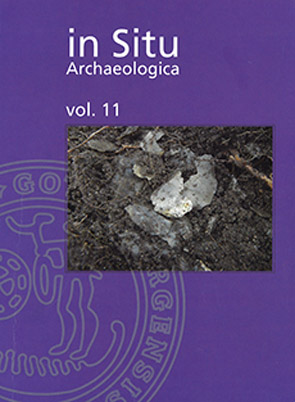Kultberget på Stora Holm
DOI:
https://doi.org/10.58323/insi.v11.13240Nyckelord:
Monument, Hillock, graves, flint, Late Neolithic, Bronze Age, Iron Age, tool manufacturing residualsAbstract
Tuve 46 was a complex monument, a hillock which people have taken the trouble to cover with stones. Among the stones were graves, mounds of burnt stones, a special mound of stones at the highest point, a cult building and on one side of the hillock were post-holes, hearths, cooking-pits and the like. On the hillock were also several concentrations of flint flakes and a few broken or unfinished flint tools. The site has mainly been used during two periods of time, one is the late Neolithic, the other is the Bronze Age
and Early Iron Age.
The concentrations of flint flakes are interpreted as residuals of tool manufacturing. It seems most of them were manufactured elsewhere, though. Only one or two were made at the place where the flints were found. The stone-covered hillock with its different constructions is interpreted as a cult site with a possible ‘Harg’ at the top.
Nedladdningar
Downloads
Publicerad
Referera så här
Nummer
Sektion
Licens
Författare som bidrar till In Situ Archaeologica har givit sitt medgivande att publicera sina artiklar under en Creative Commons-licens. Den ger tredje part vissa rättigheter till att nyttja materialet. Rättigheterna styrs av vilken licens verket är publierad under. Det åligger tredje part att sätta sig in i verkets creative common licens innan materialet används i eget syfte. Det är alltid författaren som har copyright till verket och allt nyttjande av tredje part förutsätter att ett tydligt erkännande ges till verkets upphovsperson, att en länk till licensen tillhandahålls.



